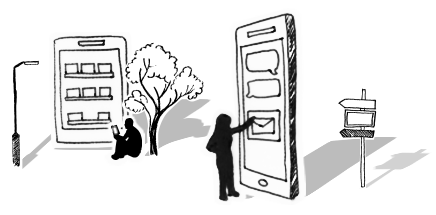




How Empowered Are Your Employees?
How empowered are your employees in learning new technology and new working behaviours?
Those managing change have to balance business priorities, project scope and deadlines and quantifiable results from learning. The learner however has the need for relevance and flexibility and has to be engaged in a conversation about how change will impact them in their role.
Balancing business and user need
Inadequate consideration of user need can mean failure to fully engage people with change and lead to lower performance and user self-sufficiency. Change programmes need the individual to make sense of the change. After all, the organisation cannot change unless the individual does.
We need to strike a delicate balance but here are some ways in which you can empower people to take charge of their own learning and become more self-sufficient IT users.
Culture matters
An open culture is one where people can communicate freely and have the tools to do so. The rise of Enterprise Social Networks and social learning means colleagues share information. Hierarchical structures and outmoded restrictions on social tools have led organisations to miss out on the critical opportunity to help users become more self-sufficient and collaborative. Examine the real time communication tools you have and there may be more potential to connect users with each other.
Users ask each other questions on social sites of course but they can also access our help as L&D professionals at the point they actually need it and we can monitor the types and frequency of particular queries to identify further need. Push learning – where content is delivered to learners, is turning into pull learning and involves how we elicit active participation and ownership from the learner.
Having the conversation
Scenario based learning presents learners with real work situations and puts them in the role of collaborative problem solver with the trainer as facilitator. It’s often a challenging approach for the trainer and L&D department but there’s great benefit in assisting the individual user with tailored knowledge just for them and in a way in which it is not imposed on them but part of a self-directed process. The facilitator must be well prepared for conversations about individual working practices which means that the discovery phase of a project is particularly vital.
Communicating the story
People are really looking for the deeper meaning behind change, the bigger picture behind learning. Communications is important in building the appetite for learning and where we tell the story to build a sense of urgency.
Authentic contexts for the individual
Involving real work scenarios applying the new processes or technology to an individual’s role, means that it stays relevant for them and they can talk about the new as it relates to them. Content isn’t imposed on people and we encourage individuals to find the answer that matters to them. This is the secret to embedding learning, increasing self-sufficiency and boosting performance.
Resources not courses
Lasting resources that can be utilised elsewhere and provide support beyond the ‘go live’ date lead to sustainability beyond an specific programme or change project. It’s this post implementation resource that helps to embed change in the long term. Plus any time learning needs resources to be on hand when they are really needed.
As always, the needs of the business are crucial in delivering change but it is people, not just technology or process that ensure successful change. Therefore striking this tricky balance between business and individual need continues to be challenging but important.
To get the latest change tips, advice and guidance directly to your inbox, sign up to our monthly Business Change Digest.
